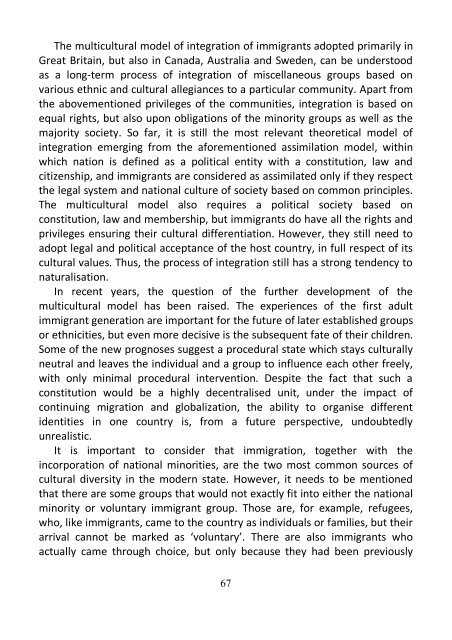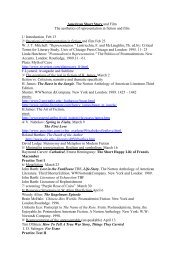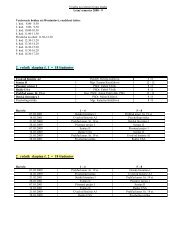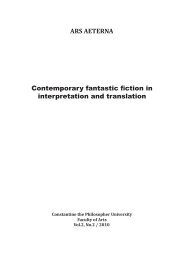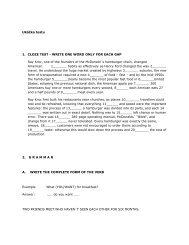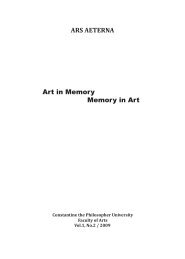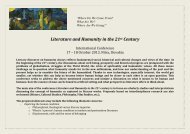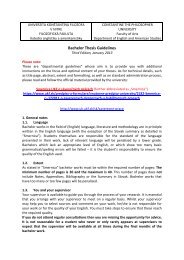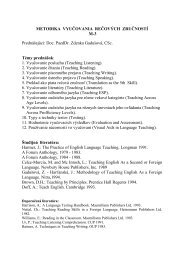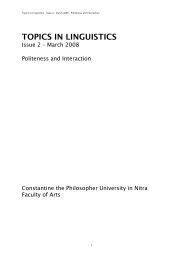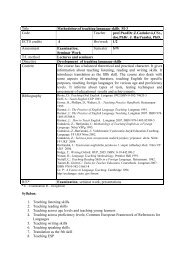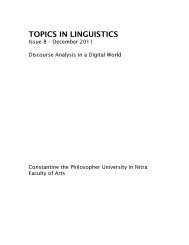Literature and Culture
Literature and Culture
Literature and Culture
Create successful ePaper yourself
Turn your PDF publications into a flip-book with our unique Google optimized e-Paper software.
The multicultural model of integration of immigrants adopted primarily in<br />
Great Britain, but also in Canada, Australia <strong>and</strong> Sweden, can be understood<br />
as a long-term process of integration of miscellaneous groups based on<br />
various ethnic <strong>and</strong> cultural allegiances to a particular community. Apart from<br />
the abovementioned privileges of the communities, integration is based on<br />
equal rights, but also upon obligations of the minority groups as well as the<br />
majority society. So far, it is still the most relevant theoretical model of<br />
integration emerging from the aforementioned assimilation model, within<br />
which nation is defined as a political entity with a constitution, law <strong>and</strong><br />
citizenship, <strong>and</strong> immigrants are considered as assimilated only if they respect<br />
the legal system <strong>and</strong> national culture of society based on common principles.<br />
The multicultural model also requires a political society based on<br />
constitution, law <strong>and</strong> membership, but immigrants do have all the rights <strong>and</strong><br />
privileges ensuring their cultural differentiation. However, they still need to<br />
adopt legal <strong>and</strong> political acceptance of the host country, in full respect of its<br />
cultural values. Thus, the process of integration still has a strong tendency to<br />
naturalisation.<br />
In recent years, the question of the further development of the<br />
multicultural model has been raised. The experiences of the first adult<br />
immigrant generation are important for the future of later established groups<br />
or ethnicities, but even more decisive is the subsequent fate of their children.<br />
Some of the new prognoses suggest a procedural state which stays culturally<br />
neutral <strong>and</strong> leaves the individual <strong>and</strong> a group to influence each other freely,<br />
with only minimal procedural intervention. Despite the fact that such a<br />
constitution would be a highly decentralised unit, under the impact of<br />
continuing migration <strong>and</strong> globalization, the ability to organise different<br />
identities in one country is, from a future perspective, undoubtedly<br />
unrealistic.<br />
It is important to consider that immigration, together with the<br />
incorporation of national minorities, are the two most common sources of<br />
cultural diversity in the modern state. However, it needs to be mentioned<br />
that there are some groups that would not exactly fit into either the national<br />
minority or voluntary immigrant group. Those are, for example, refugees,<br />
who, like immigrants, came to the country as individuals or families, but their<br />
arrival cannot be marked as ‘voluntary’. There are also immigrants who<br />
actually came through choice, but only because they had been previously<br />
67


